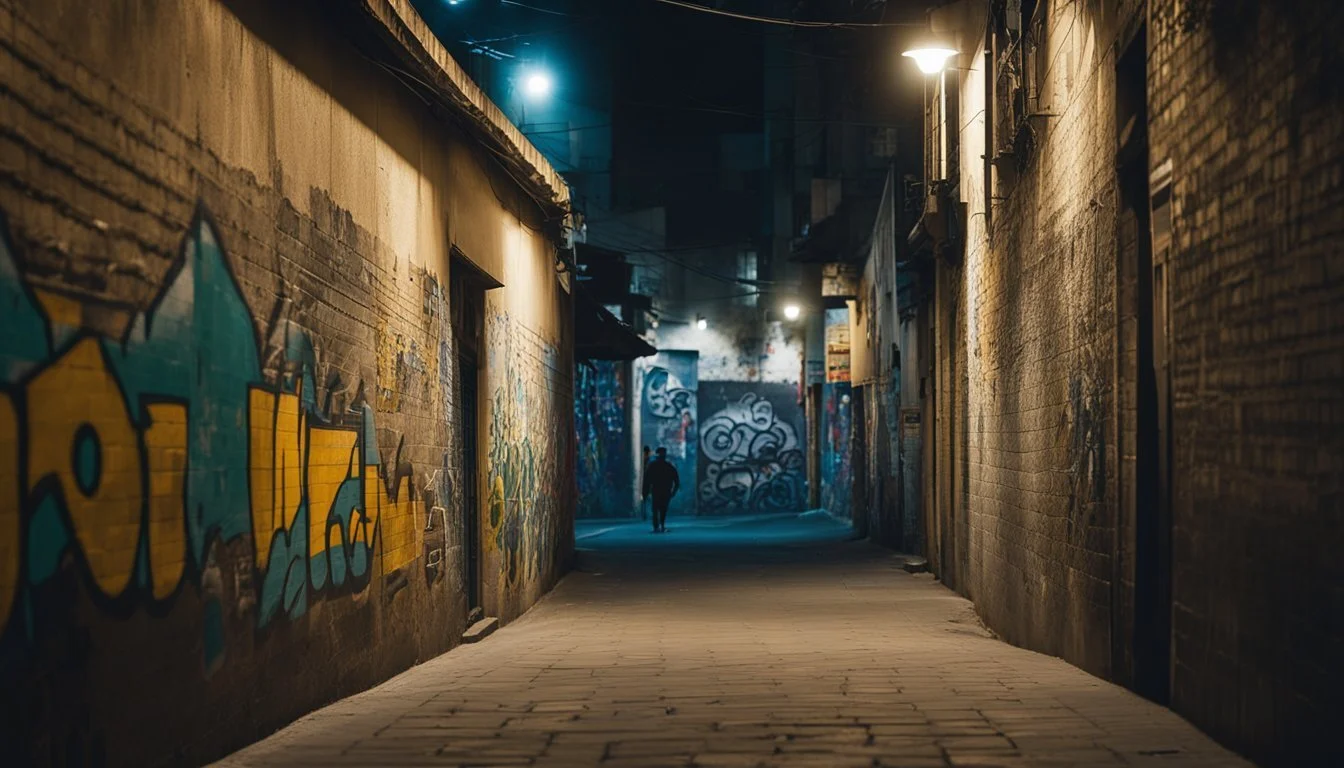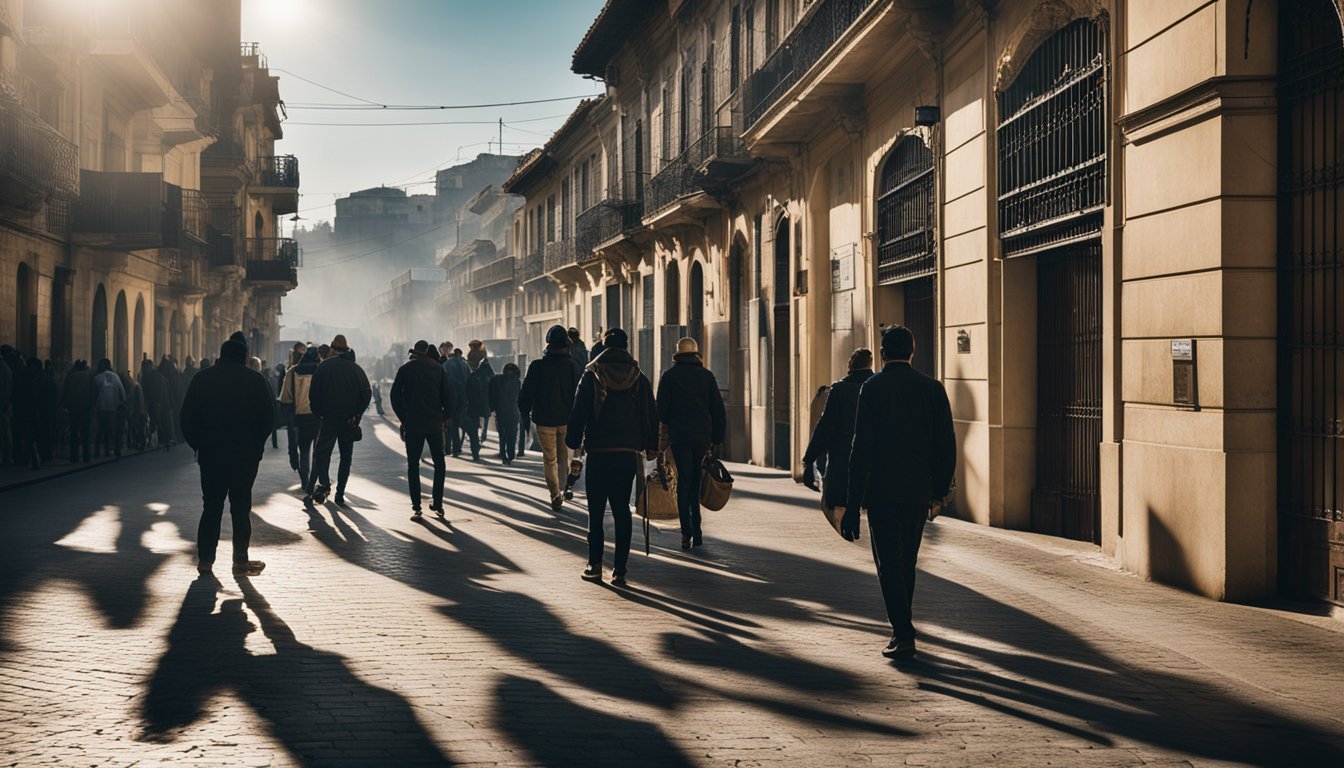7 True Crime Documentaries from Santiago to Watch Now
True crime documentaries often captivate audiences with their compelling narratives and chilling revelations. These films not only explore the darkest corners of human nature but also delve into real-life cases that have shocked communities and left lasting impacts.
Among these gripping stories are seven true crime documentaries from Santiago that promise to leave viewers deeply affected by their haunting tales and intricate details. This article introduces some of the most compelling true crime stories from Santiago, each of which provides a stark reminder of the complexities and often terrifying realities of criminal investigations.
1) The Secret of the Andes: The Colonia Dignidad Cases
Nestled in the Andes mountains of Chile, Colonia Dignidad was a secluded colony with a dark past. Founded in 1961 by Paul Schäfer, a former Nazi medic, the community was initially portrayed as a utopian society. Underneath its peaceful exterior, however, it hid horrifying secrets.
Paul Schäfer exerted absolute control over the colony, leading a regime marked by exhausting labor, violence, and abuse. Allegations surfaced over the years about Schäfer's abusive behaviors and involvement in pedophilia. He managed to evade justice for many years, using his colony as a shield.
During Augusto Pinochet's dictatorship in Chile, Colonia Dignidad became an ally of the regime. The secret police reportedly used the compound for detentions, interrogations, and torture. Many who entered the enclave during this period were never seen again.
Over time, survivors spoke out, and the public became more aware of the atrocities. Documentaries such as "A Sinister Sect: Colonia Dignidad" (2021) delve into these shocking events, shedding light on a disturbing aspect of Chilean history.
For more information on this documentary, visit IMDB.
2) The Shadow Over Santiago: Unsolved Murders
Santiago's history is marked by several haunting unsolved murders. These cases have not only baffled investigators but have also intrigued documentary filmmakers. Each documentary explores the deep, dark corners of these crimes, leaving viewers with lingering questions.
One notable documentary is The Santiago Slasher (2018). It investigates a series of brutal killings attributed to an unknown assailant. Despite extensive investigations, the identity and motives behind the Santiago Slasher remain elusive. More information on IMDB
Whispers in the Shadows (2020) delves into the mysterious case of a prominent local journalist who vanished without a trace. This film sheds light on his last known movements and the potential leads that went cold over time. More information on Wikipedia
Another compelling film, Echoes of the Undead (2021), focuses on a series of deaths in the early 2000s. The victims, all young women, were found under similar circumstances, and their murderer was never apprehended. More information on IMDB
These documentaries are unsettling not just because of the crimes themselves but also due to the chilling fact that the perpetrators are still at large. Each film provides a detailed look into the investigations and offers viewers a chance to witness the unresolved mysteries that continue to haunt Santiago.
3) The Santiago Slasher: A Cold Case Revisited
In the heart of Santiago, Chile, a series of brutal murders sent shockwaves through the community in the early 1990s. The crimes, attributed to a perpetrator dubbed the "Santiago Slasher," remained unsolved for decades. This documentary painstakingly reviews the case, examining new evidence and interviewing key witnesses.
Viewers are taken on a journey through the alleys and streets where the murders took place. The filmmakers highlight the efforts of a dedicated group of detectives who never gave up on finding justice for the victims. Their perseverance eventually led to a breakthrough in the case.
The documentary also sheds light on the forensic advancements that played a crucial role in revisiting and solving this cold case. Investigators used cutting-edge DNA technology to link a suspect to the crime scenes, finally providing closure to the victims' families.
For those interested in true crime and cold case investigations, this film offers a compelling look at how persistence and modern science can bring long-awaited answers. More Information.
4) In the Name of Justice: The Truth Behind The Vicuna Massacre
"In the Name of Justice: The Truth Behind The Vicuna Massacre" (2021) is a harrowing documentary that explores one of Santiago's most infamous criminal cases. The film meticulously details the events leading up to the massacre and the subsequent investigation, capturing the chilling reality faced by the victims and their families.
The documentary begins by setting the scene in the quiet town of Vicuna, where life was once peaceful. It soon delves into the sudden eruption of violence that shocked the community. The filmmakers use interviews with survivors, law enforcement officials, and forensic experts to paint a vivid picture of the crime's brutal nature.
Central to the narrative is the pursuit of justice. The documentary follows the painstaking efforts of investigators who worked tirelessly to bring the perpetrators to justice. Their determination and the obstacles they faced are highlighted, revealing the complexity of the case and the emotional toll on all involved.
Through powerful storytelling and authentic footage, "In the Name of Justice" provides a comprehensive look at the massacre, sparking discussions about crime, justice, and resilience. More information about the film.
5) The Disappearance of Alvaro Martinez
The story of Alvaro Martinez focuses on his sudden disappearance in Santiago in 2012.
Martinez was last seen leaving his workplace in broad daylight. His case gained significant media attention due to the lack of evidence and witnesses.
Authorities investigated multiple leads, but each trail turned cold. Family and friends conducted their own searches, but to no avail.
This documentary explores the theories surrounding his disappearance, including foul play and potential abduction. Interviews with those close to Martinez provide an intimate look into his life and last known movements.
For more information, watch the documentary "The Disappearance of Alvaro Martinez" (2018) on IMDb.
The Disappearance of Alvaro Martinez (2018) - IMDb
6) Blood in the Barrio: The Estadio Nacional Murders (2023)
During Chile's brutal dictatorship in the 1970s, Estadio Nacional became an infamous detention center. Many were arrested, tortured, and killed within its walls. This documentary sheds light on those dark days, focusing on the victims and the injustices they faced.
The film features interviews with survivors and families of the victims. It explores the harrowing experiences of detainees who faced unimaginable cruelty. Personal stories provide a deeply emotional connection to the historical events.
Archival footage and expert testimonies bring the era to life. This blend of personal and historical narratives sets a powerful tone. The haunting visuals and carefully curated content ensure a gripping, informed viewing experience.
For more information, check the documentary's IMDb page: Blood in the Barrio: The Estadio Nacional Murders (2023) on IMDb.
7) Chilean Cartel Chronicles
"Chilean Cartel Chronicles" investigates the unsettling rise of drug cartels in Chile. This documentary provides a detailed look into the operations and impacts of these criminal organizations.
Chile's homicide rate stands at 3.6 per 100,000 people as of 2021, according to Insight Crime, reflecting a worrying trend of increased violence linked to organized crime.
The documentary examines how these cartels have infiltrated various sectors, highlighting their involvement in drug trafficking, money laundering, and even legitimate businesses. It showcases interviews with law enforcement officials, ex-cartel members, and victims to paint a comprehensive picture of the situation.
As drug cartels expand their reach across Latin America, Chile has become a key player in this illicit network. This documentary is crucial for understanding the broader impact of organized crime in the region.
For more details on the film, visit its Wikipedia page.
Historical Background of Santiago's Crime Scene
Santiago has a complex history of crime, shaped by its evolving socio-economic landscape. This includes significant criminal cases that have not only captivated the public but have also influenced legal and investigative practices.
Evolution of Crime in Santiago
In the early 20th century, Santiago experienced a shift in crime dynamics due to industrialization and urbanization. With rapid growth, petty theft and organized crime groups started to emerge.
By the mid-1900s, economic disparities contributed to a rise in more violent crimes, including murders and armed robberies. Increased collaboration with international crime networks was also observed.
In recent decades, technological advancements have led to new forms of crime such as cybercrime. Law enforcement agencies in Santiago have had to adapt to these changes, incorporating modern investigative techniques and enhancing cross-border cooperation to combat emerging threats.
Notable Criminal Cases
Murder of Asunta Basterra: This case shocked Santiago in 2013 when twelve-year-old Asunta, adopted by an influential couple, was found dead. The investigation revealed disturbing details, leading to the conviction of her adoptive parents for murder, a case that deeply resonated with the public.
The Theatre Incident: An infamous episode during the late 1990s occurred when a local theater was the site of a mass hostage situation. The incident ended in significant casualties, bringing attention to security and emergency response protocols.
Madame Debeinche's Murder: In 1903, the brutal murder of Madame Debeinche highlighted the dark side of early 20th-century Santiago. The crime scene photos published at the time dramatically changed public perception and investigative techniques in the city.
These cases underscore Santiago's diverse criminal history, reflecting broader societal changes and the constant evolution of crime and justice in the region.
Psychological Impact of Crime on Santiago's Residents
Santiago's residents face a blend of fear and resilience, shaped by crime's constant presence and media portrayal. Exploring coping mechanisms and media's role in shaping perceptions provides insight into their psychological landscape.
Coping Mechanisms Within the Community
Residents of Santiago have developed various coping mechanisms to handle the stress and anxiety brought about by the high crime rates. Community solidarity plays a significant role.
Many neighborhoods have formed tight-knit communities with block watches and local support groups. These groups not only provide emotional support but also foster a sense of security through collective vigilance.
Some residents turn to religious and cultural practices for comfort. Attending local places of worship and participating in communal events often helps in reducing feelings of isolation and fear.
Others seek professional help. Local mental health services have seen an uptick in consultations related to trauma and anxiety stemming from crime experiences. Therapists and counselors employing cognitive-behavioral techniques help individuals process their experiences and build resilience.
Role of Media in Shaping Public Perception
The media significantly influences how Santiago's residents perceive crime and their personal vulnerability. True crime documentaries, news reports, and social media often amplify fear and anxiety.
Local news outlets frequently highlight crime incidents, which may lead to a heightened sense of danger even in relatively safe areas. True crime documentaries can exacerbate this perception by focusing on particularly gruesome or sensational cases.
Some media efforts aim to inform and protect. Public service announcements and educational programming on crime prevention play crucial roles. These initiatives are designed to provide practical safety tips and foster a sense of empowerment among viewers.
Finally, social media's role cannot be underestimated. Platforms often serve as a space for residents to share their experiences and awareness. While this can lead to heightened alertness, it also sometimes spreads misinformation, contributing to undue panic.
Documentary Filmmaking in Santiago
In Santiago, creating true crime documentaries presents unique hurdles. Filmmakers must also navigate the rich local culture that significantly impacts their narrative style.
Challenges Faced by Documentary Filmmakers
Documentary filmmakers in Santiago deal with logistical obstacles, such as navigating diverse locations and securing permissions. The process often requires extensive research to ensure accurate portrayal of events, especially in true crime.
Technical limitations can also pose issues, particularly in capturing high-quality footage in various weather conditions. The cooperation of local authorities is crucial yet sometimes hard to obtain, impacting the overall production schedule.
Balancing ethical considerations, like victim privacy and fair representation of the facts, remains a constant challenge.
Influence of Local Culture on Storytelling
The vibrant culture of Santiago deeply influences documentary storytelling. Filmmakers often incorporate local traditions and historical context to enrich their narratives. This cultural backdrop adds depth and authenticity to the true crime genre.
Language nuances and cultural sentiments shape interview techniques and presentation styles. Filmmakers prioritize respecting local customs and perspectives, thus creating a nuanced portrayal of events.
The influence of local folklore and legends often weaves into the storytelling, adding unique elements that resonate with both local and international audiences.











